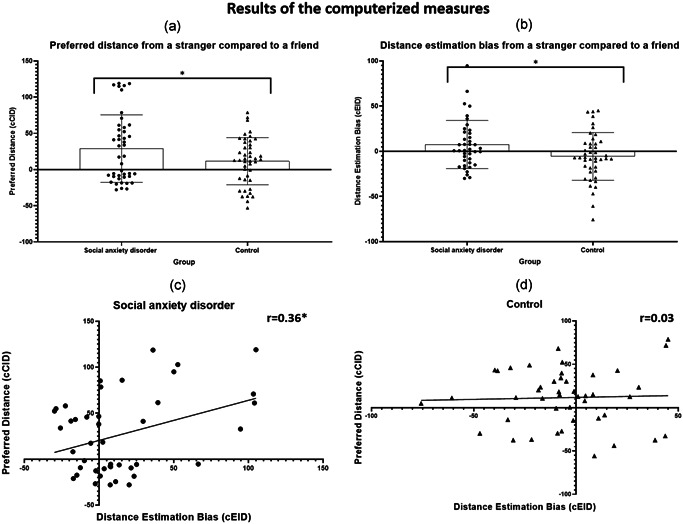Figure 4.

The results of the computerized tasks. (a) Preferred distance: the social anxiety disorder (SAD) group demonstrated a preference to maintain a greater interpersonal distance from the stranger compared to the controls (t(75) = 2, Cohen's d = 0.4, p = .048). (b) Estimated distance: the SAD group demonstrated higher distance estimation bias compared to the controls (t(85) = 2.95, Cohen's d = 0.63, p = .004). Specifically, the SAD participants estimated the distance from a stranger as shorter, such that the stranger was estimated in closer proximity. (c) SAD: a significant correlation was found (r = .36, r 2 = 13%, p = .02). Specifically, participants how underestimated the interpersonal distance also preferred to maintain a greater distance from the stranger. (d) Control: no significant correlation was found (r = .03, r 2 = 0, n.s)
